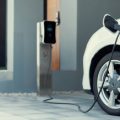1. Introduction to the UK Second-Hand EV Market
In recent years, the UK has witnessed a significant surge in interest towards electric vehicles (EVs), particularly within the second-hand market. With increasing environmental awareness and government incentives promoting greener transport, more British motorists are considering pre-owned EVs as practical alternatives to traditional petrol and diesel cars. The appeal of second-hand electric cars lies not only in their lower price tags compared to new models but also in reduced running costs and the promise of cleaner motoring. As the supply of used EVs grows—thanks to early adopters upgrading their vehicles—the choices available to buyers have broadened, making it easier than ever for everyday drivers to make the switch. For many, opting for a second-hand EV is becoming a sensible way to enjoy the benefits of electric driving without breaking the bank or compromising on convenience.
2. Current State of Charging Infrastructure in the UK
The charging infrastructure for electric vehicles (EVs) in the UK has rapidly expanded over recent years, but still presents a patchwork experience for drivers—especially those considering a second-hand EV purchase. Understanding where and how you can charge your car is critical before buying, as it directly affects both convenience and running costs.
Public and Private EV Chargers: An Overview
There are thousands of public charging points available nationwide, provided by various companies such as BP Pulse, Pod Point, and InstaVolt. Private home chargers are also increasingly popular, especially with government grants helping to offset installation costs. However, the availability and speed of these chargers can vary significantly depending on location.
Regional Disparities in Charging Access
Urban areas like London, Manchester, and Birmingham tend to have a much denser network of public chargers compared to rural or coastal regions. This creates a divide that can impact the desirability and practicality of owning a second-hand EV in different parts of the country.
| Region | Public Chargers per 100,000 People | Home Charger Uptake (%) |
|---|---|---|
| London | 67 | 38% |
| South East | 39 | 35% |
| Northern Ireland | 18 | 20% |
| Scotland | 56 | 33% |
| Wales | 22 | 25% |
Government Initiatives to Expand Charging Options
The UK government has recognised these regional gaps and is actively investing in initiatives like the Rapid Charging Fund and Local Electric Vehicle Infrastructure (LEVI) schemes. These programmes aim to increase the number of rapid chargers on key routes and support local councils in rolling out more street-side charging solutions. As these initiatives progress, they will help make second-hand EV ownership more feasible across the country—but for now, buyers should check their local charging landscape before making a purchase decision.

3. Impact of Charging Availability on Used EV Values
One of the most significant factors currently shaping the second-hand EV market in the UK is the accessibility of reliable charging infrastructure. When potential buyers assess used electric vehicles, their decision-making process is heavily influenced by how easy it is to recharge at home, work, or public locations. This has a direct impact on the resale value, desirability, and rate of depreciation for these vehicles.
Influence on Resale Value
The closer a used EV is to well-maintained public charging stations or rapid chargers, the more attractive it becomes to buyers. In urban areas where charging points are plentiful, used EVs tend to hold their value better compared to those located in rural regions with sparse coverage. For example, a second-hand Nissan Leaf in central Manchester can command a higher price than an identical model situated in a remote part of Wales, simply due to easier access to charging facilities.
Desirability Among Buyers
Charging convenience is now one of the top priorities for second-hand EV purchasers. Many buyers actively search for homes with off-street parking suitable for installing a wallbox charger or look for properties close to public charge points. As a result, vehicles advertised with features such as “home charging included” or “nearby rapid charging” often receive more enquiries and sell faster than similar models without such advantages.
Depreciation Trends
The lack of reliable charging infrastructure accelerates depreciation rates for used EVs in underserved areas. Vehicles that are difficult to charge not only sit on the market longer but also see sharper drops in value over time. Conversely, as the UK government and private sector expand fast-charging networks—especially along major motorways and city centres—the gap in depreciation between different regions may start to narrow. In summary, robust charging infrastructure is quickly becoming a key driver in determining the financial appeal and practical usability of pre-owned electric cars across Britain.
4. Buyer Confidence and Perceived Barriers
When considering the second-hand EV market in the UK, buyer confidence is a crucial factor influenced heavily by charging infrastructure. British motorists are increasingly interested in making the switch to electric vehicles, but several perceived barriers still affect their willingness to purchase a used EV. Three primary concerns dominate these discussions: access to reliable charging, the health and longevity of EV batteries, and worries about range anxiety.
British Motorists Attitudes Toward Used EVs
A recent survey of UK drivers revealed that while cost savings and environmental benefits are attractive, many potential buyers hesitate due to uncertainties around practical day-to-day use. The table below highlights key concerns expressed by British motorists when considering a used EV:
| Concern | Description | Percentage of Respondents (%) |
|---|---|---|
| Charging Access | Worries about finding convenient public or home charging points | 58% |
| Battery Health | Doubts over battery degradation and expensive replacement costs | 44% |
| Range Anxiety | Fear of running out of power on longer journeys due to limited range | 39% |
| Lack of Information | Uncertainty regarding maintenance history and battery condition reports | 31% |
The Role of Charging Infrastructure in Buyer Confidence
The patchy distribution of charging stations across the UK can make potential buyers wary, especially those living outside major cities. While London and other large urban centres boast relatively dense charging networks, rural areas often lag behind. This disparity has a direct impact on buyer confidence, with many drivers stating they would only consider a used EV if they had guaranteed access to reliable charging either at home or nearby.
Tackling Battery Health Concerns
Another significant barrier is uncertainty over battery health in older EVs. British buyers are accustomed to checking service histories and MOT records for petrol and diesel cars, but evaluating an EV’s battery condition requires different information—such as state-of-health (SOH) certificates or recent diagnostic reports. Until transparent standards become commonplace for second-hand EV sales, this will remain a sticking point for many cautious buyers.
Cultural Factors Influencing Second-Hand EV Adoption in the UK
The traditional British preference for reliability and value for money plays a role too. Many motorists take a ‘wait and see’ approach, hoping that improvements in both public charging infrastructure and affordable battery diagnostics will ease their concerns over time. As more resources become available—like local council initiatives supporting on-street chargers—confidence is expected to grow, making used EVs more appealing for the average British driver.
5. Emerging Trends: Home Charging & Workplace Solutions
As the UK grapples with the limitations of public charging networks, more drivers and businesses are turning to home charging set-ups and workplace charging stations as practical alternatives. These solutions are becoming vital in addressing infrastructure gaps that might otherwise deter buyers from considering second-hand EVs. With a home charger, owners can conveniently top up their vehicle overnight, saving both time and money compared to relying solely on public facilities. This DIY approach not only boosts daily usability but also reassures potential buyers about ease of ownership.
Workplace charging is equally transformative, particularly for those without off-street parking or renters unable to install personal chargers. Many forward-thinking employers are now investing in onsite EV charging points, offering staff the ability to recharge during working hours. This trend is especially prominent in urban centres where kerbside charging remains scarce. By providing reliable alternatives, workplaces help bridge the gap between demand for electric vehicles and actual infrastructure availability.
These innovations have a direct impact on the second-hand EV market. When prospective buyers see that home and workplace charging options are widely accessible, it alleviates concerns over range anxiety and charging convenience—two major barriers to purchasing pre-owned electric cars. As a result, confidence grows, resale values stabilise, and the appeal of used EVs increases across the UK.
For sellers, highlighting an existing home charger or proximity to workplace charging can make their vehicle listings more attractive and justify a higher asking price. For buyers, understanding how to retrofit or install a home charging unit themselves—or negotiate access at work—empowers them to make informed decisions and get the most out of their purchase. In short, these grassroots solutions are playing an essential role in driving the continued growth of the UKs second-hand EV market.
6. Future Outlook for the UK Second-Hand EV Market
The future of the UK’s second-hand electric vehicle (EV) market looks promising, especially as charging infrastructure continues to improve across the country. As more public and private charging points are installed, particularly in rural areas and on-street locations, the perceived barriers to EV ownership will decrease significantly. This will likely encourage more drivers to consider switching to used EVs when replacing their vehicles, knowing that reliable charging is no longer a London-centric convenience but a nationwide reality.
Predictions for Market Growth
With the government’s continued investment in rapid charging networks and incentives for home charger installations, we can expect a surge in demand for second-hand EVs within the next few years. Increased visibility and accessibility of charging stations mean less range anxiety and greater appeal for those on a budget or looking to reduce their carbon footprint without paying new car prices. As battery technology advances and older models retain better performance, residual values will stabilise, making used EVs an even smarter financial choice for British motorists.
Key Recommendations
- Expand On-Street Charging: Local councils should accelerate the rollout of convenient on-street chargers, particularly in densely populated urban areas where off-road parking is limited.
- Improve Public Awareness: Education campaigns about new charging locations and advancements in charger speed will help dispel myths around EV practicality.
- Encourage Workplace Charging: Government grants or tax breaks could incentivise businesses to install workplace chargers, making EV ownership feasible for even more commuters.
DIY Tip for Used EV Owners
If you’re considering buying a used EV, check your local council’s website for planned charging infrastructure upgrades or apply for a home charger grant through the OZEV scheme. Regularly maintaining your battery health with recommended charging habits can also extend your vehicle’s lifespan and resale value.
In summary, as the UK accelerates its transition towards cleaner motoring, improvements in charging infrastructure are set to be a game-changer for the second-hand EV market. By addressing access and reliability issues, Britain can make electric mobility accessible to everyone—from city dwellers in flats to families in the countryside—ensuring that the benefits of electrification are truly widespread.


